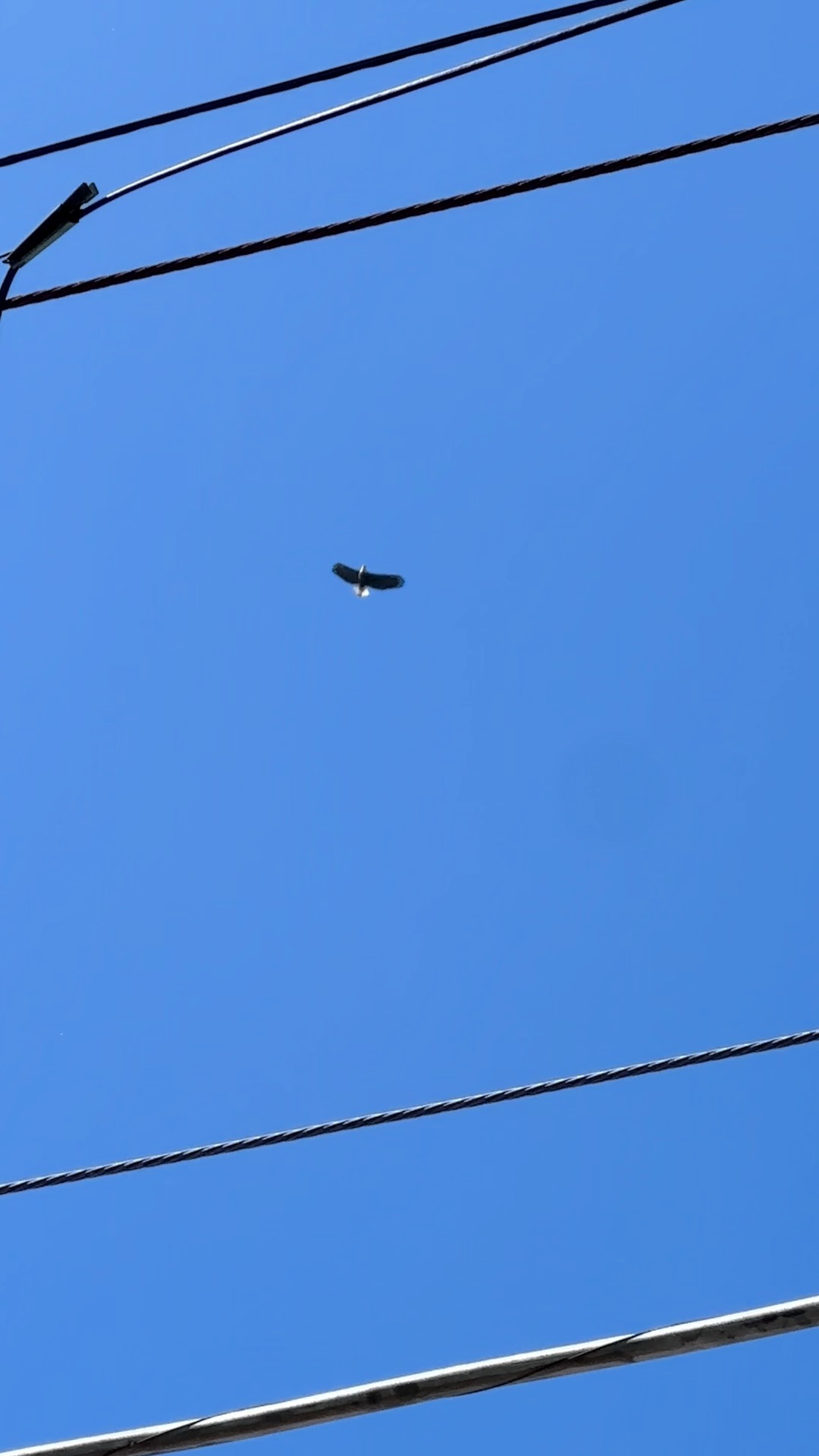- Overview of the bald eagle’s characteristics and identification features
- The significance of bald eagle sightings in urban areas
- The role of zoos in wildlife conservation and educating the public about local ecosystems
- Encouraging community involvement in bird watching and conservation efforts
- Insights into the symbiotic relationships between urban development and wildlife habitats
Across the sweeping sky of the Zoo neighborhood, a majestic creature captured eyes as it soared above—an adult bald eagle, a symbol of strength and freedom. Recognizable by its distinct white head and tail contrasting against a dark brown body, the bald eagle (Haliaeetus leucocephalus) is an iconic presence across the skies of North America. These powerful raptors, often associated with wilderness and freedom, hold significant cultural and ecological value.
The adult bald eagle is a large bird with a wingspan ranging from six to seven and a half feet. Its beak is large and hooked, colored in bright yellow, which reflects its keen ability to hunt and scavenge. These birds are typically found near bodies of open water where abundant food supplies and old-growth trees for nesting are accessible. Their diet mainly consists of fish, but they are opportunistic and will consume birds, small mammals, and carrion. The bald eagle’s widespread range and adaptive nature are testaments to its survival prowess.
Spotting a bald eagle in an urban environment is a notable event, representing the increasing intersection between human environments and wildlife territories. The sight of a bald eagle in the Zoo neighborhood is a rarity that signifies both the resilience of wildlife and the potential for harmonious coexistence between urban settings and natural habitats. For these birds to thrive, water quality and plentiful food sources are crucial, signifying that a bald eagle’s presence may reflect well-maintained ecosystems even within anthropogenic landscapes.
Zoos play a substantial role in wildlife conservation and public education. The modern zoo serves as a bridge, connecting urban populations to the natural world and the intricacies of biological diversity. Institutions like zoos are vital in their efforts to enact captive breeding programs, participate in research, and support habitat restoration projects. Their educational platforms raise awareness about local and global conservation issues, encouraging stewardship and sparking curiosity about the ecosystem’s balance. Through interactive exhibits and educational campaigns, zoos inspire communities to participate actively in local wildlife conservation initiatives.
Promoting an interest in birdwatching and community-led conservation efforts can leverage local interest sparked by such sightings. Citizen science programs can bolster data collection and reflect population trends, assisting researchers in evaluating the success of urban wildlife adaptation and informing future conservation strategies. Engaging the public in birdwatching not only furthers educational pursuits but also fosters a sense of connection to the natural world, encouraging positive environmental practices.
As urban areas encroach upon natural landscapes, the advancement of wildlife corridors and green spaces within cities becomes increasingly fundamental. These habitats support species migration and biodiversity by providing linkages between fragmented ecosystems. Urban planning that integrates ecological considerations ensures the continuation of species like the bald eagle, affirming that anthropogenic progress can occur alongside ecological preservation. These corridors not only benefit targeted species but also enhance urban residents’ quality of life by promoting green, livable environments.
Wild birds infuse dynamic harmony into urban ecosystems. Their presence is an indicator of environmental health and pushes communities to pursue conservation efforts. Observing occurrences such as bald eagles soaring above urban neighborhoods encourages residents to value and protect the diverse wildlife with which they share their environment.
The sight of a bald eagle above a neighborhood serves as a reminder of our ecological responsibilities. These remarkable birds not only enrich the landscape but also inspire a broader cultural appreciation for the natural world. The cooperative endeavors of zoos, conservationists, and local communities bring forward opportunities to preserve not just iconic species like the bald eagle but the myriad life forms that contribute to a balanced ecosystem. Through these efforts, the harmonization of urban development and wildlife conservation moves closer to realization.
*****
Source Description
Look who we spotted soaring above the Zoo neighborhood last week! 👀
Easily identified by its signature white head and tail, an adult bald eagle circles slowly and surveys the territory below. 🦅
What wild birds do you see where you live? 🐦


